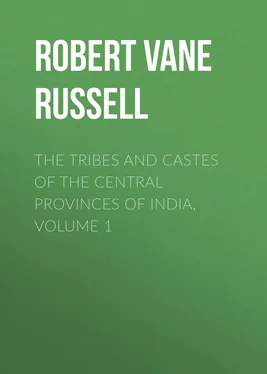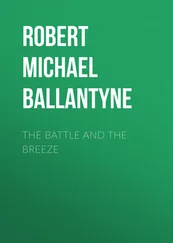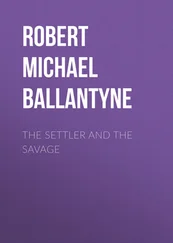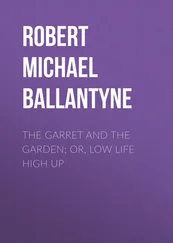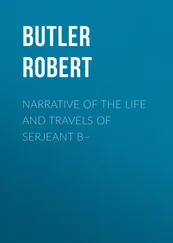Robert Vane Russell - The Tribes and Castes of the Central Provinces of India, Volume 1
Здесь есть возможность читать онлайн «Robert Vane Russell - The Tribes and Castes of the Central Provinces of India, Volume 1» — ознакомительный отрывок электронной книги совершенно бесплатно, а после прочтения отрывка купить полную версию. В некоторых случаях можно слушать аудио, скачать через торрент в формате fb2 и присутствует краткое содержание. Жанр: foreign_prose, История, foreign_edu, foreign_antique, на английском языке. Описание произведения, (предисловие) а так же отзывы посетителей доступны на портале библиотеки ЛибКат.
- Название:The Tribes and Castes of the Central Provinces of India, Volume 1
- Автор:
- Жанр:
- Год:неизвестен
- ISBN:нет данных
- Рейтинг книги:5 / 5. Голосов: 1
-
Избранное:Добавить в избранное
- Отзывы:
-
Ваша оценка:
- 100
- 1
- 2
- 3
- 4
- 5
The Tribes and Castes of the Central Provinces of India, Volume 1: краткое содержание, описание и аннотация
Предлагаем к чтению аннотацию, описание, краткое содержание или предисловие (зависит от того, что написал сам автор книги «The Tribes and Castes of the Central Provinces of India, Volume 1»). Если вы не нашли необходимую информацию о книге — напишите в комментариях, мы постараемся отыскать её.
The Tribes and Castes of the Central Provinces of India, Volume 1 — читать онлайн ознакомительный отрывок
Ниже представлен текст книги, разбитый по страницам. Система сохранения места последней прочитанной страницы, позволяет с удобством читать онлайн бесплатно книгу «The Tribes and Castes of the Central Provinces of India, Volume 1», без необходимости каждый раз заново искать на чём Вы остановились. Поставьте закладку, и сможете в любой момент перейти на страницу, на которой закончили чтение.
Интервал:
Закладка:
47. Subcastes formed from social or religious differences, or from mixed descent
Subcastes are also occasionally formed from differences of social practice which produce some slight gain or loss of status. Thus the Biyāhut or ‘Married’ Kalārs prohibit the remarriage of widows, saying that a woman is married once for all, and hence rank a little higher than the others. The Dosar Banias, on the other hand, are said to take their name from dūsra , second, because they allow a widow to marry a second time and are hence looked upon by the others as a second-class lot. The Khedāwāl Brāhmans are divided into the ‘outer’ and ‘inner’: the inner subdivision being said to exist of those who accepted presents from the Rāja of Kaira and remained in his town, while the outer refused the presents, quitted the town and dwelt outside. The latter rank a little higher than the former. The Suvarha Dhīmars keep pigs and the Gadhewāle donkeys, and are considered to partake of the impure nature of these animals. The Gobardhua Chamārs wash out and eat the undigested grain from the droppings of cattle on the threshing-floors. The Chungia group of the Satnāmi Chamārs are those who smoke the chongi or leaf-pipe, though smoking is prohibited to the Satnāmis. The Nāgle or ‘naked’ Khonds have only a negligible amount of clothing and are looked down upon by the others. The Makaria Kamārs eat monkeys and are similarly despised.
Subcastes are also formed from mixed descent. The Dauwa Ahīrs are held to be the offspring of Ahīr women who were employed as wet-nurses in the houses of Bundela Rājpūts and bore children to their masters. The Halbas and Rautias are divided into subcastes known as Puraīt or ‘pure,’ and Surāit or of ‘mixed’ descent. Many castes have a subcaste to which the progeny of illicit unions is relegated, such as the Dogle Kāyasths, and the Lahuri Sen subcaste of Barais, Banias and other castes. Illegitimate children in the Kasār (brass-worker) caste form a subcaste known as Tākle or ‘thrown out,’ Vidur or ‘illegitimate,’ or Laondi Bachcha, the issue of a kept wife. In Berār the Mahādeo Kolis, called after the Mahādeo or Pachmarhi hills, are divided into the Khas, or ‘pure,’ and the Akarāmāse or ‘mixed’; this latter word means gold or silver composed of eleven parts pure metal and one part alloy. Many subcastes of Bania have subcastes known as Bīsa or Dasa, that is ‘Twenty’ or ‘Ten’ groups, the former being of pure descent or twenty-carat, as it were, and the latter the offspring of remarried widows or other illicit unions. In the course of some generations such mixed groups frequently regain full status in the caste.
Subcastes are also formed from members of other castes who have taken to the occupation of the caste in question and become amalgamated with it; thus the Korchamārs are Koris (weavers) adopted into the Chamār (tanner) caste; Khatri Chhīpas are Khatris who have become dyers and printers; the small Dāngri caste has subcastes called Teli, Kalār and Kunbi, apparently consisting of members of those castes who have become Dāngris; the Bāman Darzis or tailors will not take food from any one except Brāhmans and may perhaps be derived from them, and the Kaith Darzis may be Kāyasths; and so on.
Occasionally subcastes may be formed from differences of religious belief or sectarian practice. In northern India even such leading Hindu castes as Rājpūts and Jāts have large Muhammadan branches, who as a rule do not intermarry with Hindus. The ordinary Hindu sects seldom, however, operate as a bar to marriage, Hinduism being tolerant of all forms of religious belief. Those Chamārs of Chhattīsgarh who have embraced the doctrines of the Satnāmi reforming sect form a separate endogamous subcaste, and sometimes the members of the Kabīrpanthi sect within a caste marry among themselves.
Statistics of the subcastes are not available, but their numbers are very extensive in proportion to the population, and even in the same subcaste the members living within a comparatively small local area often marry among themselves and attend exclusively at their own caste feasts, though in the case of educated and well-to-do Hindus the construction of railways has modified this rule and connections are kept up between distant groups of relatives. Clearly therefore differences of occupation or social status are not primarily responsible for the subcastes, because in the majority of cases no such differences really exist. I think the real reason for their multiplication was the necessity that the members of a subcaste should attend at the caste feasts on the occasion of marriages, deaths and readmission of offenders, these feasts being of the nature of a sacrificial or religious meal. The grounds for this view will be given subsequently.
48. Exogamous groups
The caste or subcaste forms the outer circle within which a man must marry. Inside it are a set of further subdivisions which prohibit the marriage of persons related through males. These are called exogamous groups or clans, and their name among the higher castes is gotra . The theory is that all persons belonging to the same gotra are descended from the same male ancestor, and so related. The relationship in the gotra now only goes by the father’s side; when a woman marries she is taken into the clan of her husband and her children belong to it. Marriage is not allowed within the clan and in the course of a few generations the marriage of persons related through males or agnates is prohibited within a very wide circle. But on the mother’s side the gotra does not serve as a bar to marriage and the union of first cousins would be possible, other than the children of two brothers. According to Hindu law, intermarriage is prohibited within four degrees between persons related through females. But generally the children of first cousins are allowed to marry, when related partly through females. And several castes allow the intermarriage of first cousins, that of a brother’s daughter to a sister’s son and in a less degree of a brother’s son to a sister’s daughter being specially favoured. One or two Madras castes allow a man to marry his niece, and the small Dhoba caste of Mandla permit the union of children of the same mother but different fathers.
Sir Herbert Risley classed the names of exogamous divisions as eponymous, territorial or local, titular and totemistic. In the body of this work the word clan is usually applied only to the large exogamous groups of the Rājpūts and one or two other military castes. The small local or titular groups of ordinary Hindu castes are called ‘section,’ and the totemic groups of the primitive tribes ‘sept.’ But perhaps it is simpler to use the word ‘clan’ throughout according to the practice of Sir J.G. Frazer. The vernacular designations of the clans or sections are gotra , which originally meant a stall or cow-pen; khero , a village; dih , a village site; baink , a title; mul or mur , literally a root, hence an origin; and kul or kuri , a family. The sections called eponymous are named after Rishis or saints mentioned in the Vedas and other scriptures and are found among the Brāhmans and a few of the higher castes, such as Vasishta, Garga, Bhāradwāj, Vishvamitra, Kashyap and so on. A few Rājpūt clans are named after kings or heroes, as the Rāghuvansis from king Rāghu of Ajodhia and the Tilokchandi Bais from a famous king of that name. The titular class of names comprise names of offices supposed to have been held by the founder of the clan, or titles and names referring to a personal defect or quality, and nicknames. Instances of the former are Kotwār (village watchman), Chaudhri, Meher or Māhto (caste headman), Bhagat (saint), Thākuria and Rawat (lord or prince), Vaidya (physician); and of titular names and nicknames: Kuldip (lamp of the family), Mohjaria (one with a burnt mouth), Jāchak (beggar), Garkata (cut-throat), Bhātpagar (one serving on a pittance of boiled rice), Kangāli (poor), Chīkat (dirty), Petdukh (stomach-ache), Ghunnere (worm-eater) and so on. A special class of names are those of offices held at the caste feasts; thus the clans of the Chitrakathi caste are the Atak or Mānkari, who furnish the headman of the caste panchāyat or committee; the Bhojin who serve the food at marriages and other ceremonies; the Kākra who arrange for the lighting; the Gothārya who keep the provisions, and the Ghorerao ( ghora , a horse) who have the duty of looking after the horses and bullock-carts of the caste-men who assemble. Similarly the five principal clans of the small Turi caste are named after the five sons of Singhbonga or the sun: the eldest son was called Mailuar and his descendants are the leaders or headmen of the caste; the descendants of the second son, Chardhagia, purify and readmit offenders to caste intercourse; those of the third son, Suremār, conduct the ceremonial shaving of such offenders, and those of the fourth son bring water for the ceremony and are called Tirkuār. The youngest brother, Hasdagia, is said to have committed some caste offence, and the four other brothers took the parts which are still played by their descendants in his ceremony of purification. In many cases exogamous clans are named after other castes or subcastes. Many low castes have adopted the names of the Rājpūt clans, either from simple vanity as people may take an aristocratic surname, or because they were in the service of Rājpūts, and have adopted the names of their masters or are partly descended from them. Other names of castes found among exogamous groups probably indicate that an ancestor belonging to that caste was taken into the one in which the group is found. The Bhaina tribe have clans named after the Dhobi, Ahīr, Gond, Māli and Panka castes. The members of such clans pay respect to any man belonging to the caste after which they are named and avoid picking a quarrel with him; they also worship the family gods of the caste.
Читать дальшеИнтервал:
Закладка:
Похожие книги на «The Tribes and Castes of the Central Provinces of India, Volume 1»
Представляем Вашему вниманию похожие книги на «The Tribes and Castes of the Central Provinces of India, Volume 1» списком для выбора. Мы отобрали схожую по названию и смыслу литературу в надежде предоставить читателям больше вариантов отыскать новые, интересные, ещё непрочитанные произведения.
Обсуждение, отзывы о книге «The Tribes and Castes of the Central Provinces of India, Volume 1» и просто собственные мнения читателей. Оставьте ваши комментарии, напишите, что Вы думаете о произведении, его смысле или главных героях. Укажите что конкретно понравилось, а что нет, и почему Вы так считаете.
